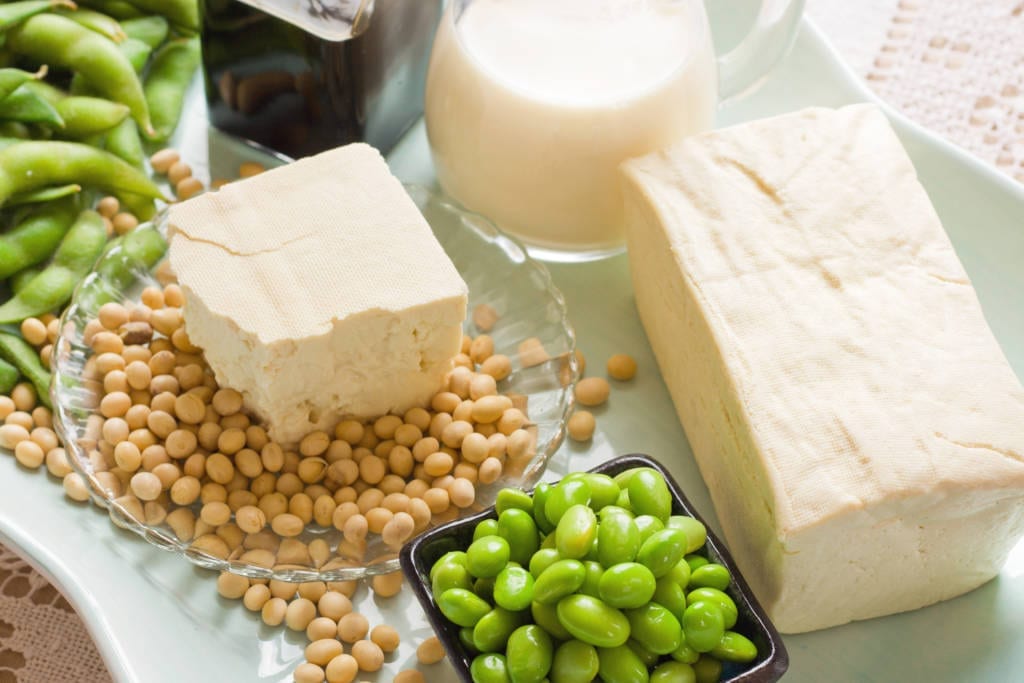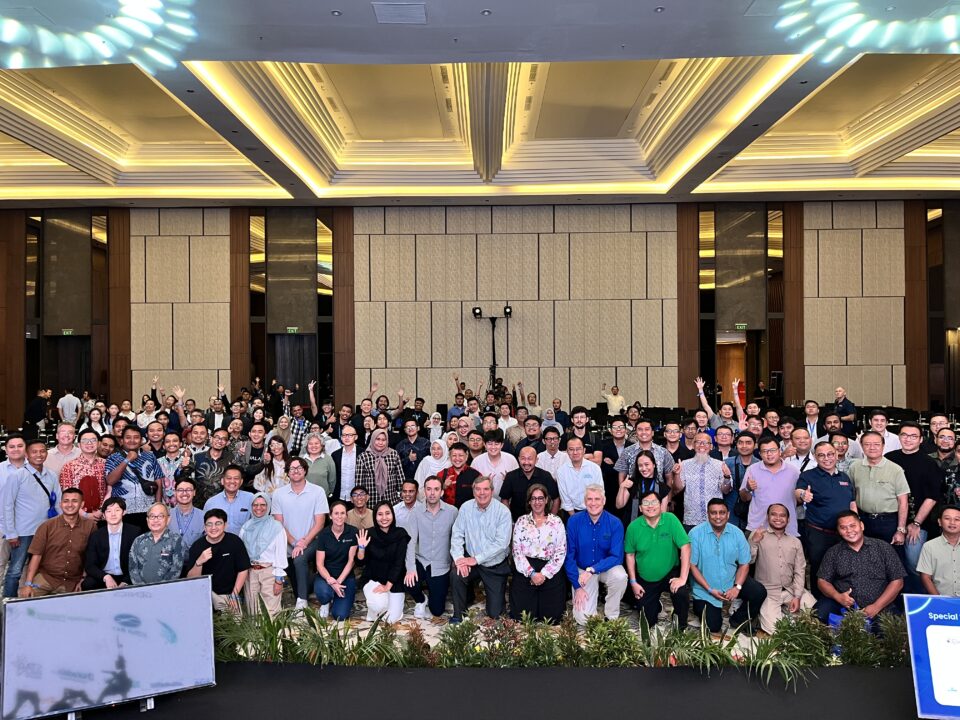
Drawing Secretary Perdue and Under Secretary McKinney, the U.S. Soybean Export Council (USSEC)
Pan-Asia Digital Conference provided valuable global and U.S. market insights to 1,700 customers and soybean industry representatives.
ST. LOUIS (June 24, 2020) – To continue to proactively market U.S. Soy to international buyers in the COVID-19 global landscape, the U.S. Soybean Export Council (USSEC) hosted two digital conferences in June for more than 1,700 customers and soybean industry representatives from the Pan-Asia region. The events, the Pan-Asia Soy Food Summit and Asia Trade Exchange 2020, demonstrated U.S. Soy’s versatility as both food and feed and highlighted how the soy industry has remained reliable and sustainable since the onset of the pandemic.
While COVID-19 has substantially impacted markets around the world, U.S. soybean farmers are meeting market needs through innovative tactics despite the challenges. Reaching key soy importers at each event, U.S. farmers and globally recognized experts discussed world agricultural trends, the 2021 U.S. soybean crop outlook, soybean demand fluctuations, U.S. Soy's deep commitment to sustainable production and more. Participants also heard about the initiatives and long-term investments U.S. Soy has undertaken to ensure that they have access to the most consistent supply of high-quality soybeans on the market.
“Pan-Asia is a significant market region for U.S. Soy. Our farmers are honored to provide a high-quality, nutritious product that contributes so greatly to the cultural fabric of people's lives across the region,” said Jim Sutter, USSEC CEO. “We’ve pivoted to engage customers virtually in new ways and maintain these thriving relationships to reiterate our unwavering dependability and adaptability as a proud supplier of choice.”
The events provided key decision makers and industry participants the opportunity to attend virtual trade shows with U.S. exporters and interact with other conference attendees in real-time. This unique digital convening provided a similar experience to meeting in person, but technology offered the flexibility to watch the sessions (at any time), visit organizations in a virtual exhibit hall or interact one-on-one with other industry professionals, with the benefit of embedded translation to break down language barriers.
“Southeast Asia continues to be a region that holds tremendous potential. The agricultural landscape in this part of the world is diverse with a growing population that consumes large amounts of U.S. Soy and soybean products,” said Tim Loh, USSEC’s Southeast Asia & Oceania Regional Director. “We continue to innovate to reach customers and stakeholders around the world. Many customers in attendance expressed appreciation for the opportunity to hear from experts in the field and network with U.S. and Pan-Asia organizations virtually that have a vested interest in utilizing soy in their products.”
U.S. soybean farmers also had a prominent presence at the Pan-Asia Soy Food Summit and Asia Trade Exchange, sharing their perspective of the 2020 planting season and discussing the sustainability practices that they’ve implemented on their farm.
“While the growing season is keeping us busy, these interactions are table stakes for our farmer leaders. We always hear from our customers that they like the total package provided by U.S. Soy, spanning the quality, consistency, reliability and the logistics superiority of our transportation infrastructure delivering the product,” said Monte Peterson, Chairman of USSEC, board member of the American Soybean Association and soybean farmer in Valley City, N.D. “Aside from the product itself, our importers have appreciated the professionalism and educational sessions that U.S. Soy offers. Looking ahead, it is important that we cultivate our partnerships in this region even further.”
USDA Secretary Sonny Perdue delivered a welcome address to kick off both conferences, in which he spoke on the importance of trade relationships and his confidence in U.S. Soy.
“I'm very proud of the reputation America's farmers have earned on the world stage. Other countries continue to recognize the United States as a reliable supplier of high-quality soybeans and other farm and food products. I'm confident that this virtual conference and trade show will result in even more mutual wins. And my hope is that this event gives suppliers of U.S. Soy an opportunity to connect and reconnect with buyers from across Asia to create new business relationships benefiting us all.”
Included below are global and U.S. market insights from presenters at the Pan-Asia Soy Food Summit, held June 9-11, and Asia Trade Exchange 2020, held June 15-17. Visit the links below to register and watch the recorded livestream presentations – which are available on-demand 90 days following the conferences.
Highlights from the Pan-Asia Soy Food Summit
Sessions were held over three days and noteworthy speakers included USDA Secretary of Agriculture Sonny Perdue; Thomas Halverson, President and Chief Executive Office CoBank; Dave Donnan, Investor, Partner Emeritus (retired) Kearney; Mary Shelman, Board Director and Strategic Advisor; and other leading industry experts.
Thomas Halverson, President and Chief Executive Officer CoBank, discussed COVID-19, its impact on the global economy and how the U.S. agriculture industry is adjusting.
“The U.S. farmers and ranchers and the agribusiness complex in this country are incredibly efficient. They produce fantastic products that are sold, not just in the United States and North America, but throughout the world. We have a productive agricultural base in the United States, and we're consistently a reliable producer, with a surge capacity to demonstrate our strength as a supplier. And if market conditions are favorable, commodity prices, and therefore net farm income, will increase. But as a result of the uncertainties of trade negotiations, trade disruptions, dislocations and COVID-19, although net farm income is going up, the percentage that comes through transfers from the government has been increasing dramatically. Food security is a national security consideration. We strive for a stable, secure, and safe agricultural production complex that is not strained by the vicissitudes of international relations and other factors.”
Dave Donnan, Investor, Partner Emeritus (Retired) Kearney, reported on how consumers are adapting to a COVID-19 world.
“What will happen post-coronavirus? No one knows for certain, but recent consumer surveys show that some of these new consumer behaviors will continue as health, immunity and nutrition will become key for consumers. While food and groceries are selling higher volumes, we expect that consumer frugality and cost cutting will become a driving force in consumer purchase patterns. For food companies, they will likely need to focus on private-label products, food basics, price and value shopping. Also, a decrease in indulgent categories, premium products and discretionary spending is expected. Companies need to adjust their brand messaging to communicate with consumers with their new perspectives.”
Mary Shelman, Board Director and Strategic Advisor, spoke about why sustainable agriculture is fundamental.
“Sustainability begins on the farm. It's impossible to produce sustainable products once you get past the farm gate. The land, the water, the crop inputs, the energy – most of that happens inside. And because of this, it requires a much tighter relationship today across the food chain with food companies working backwards through their chain with producers in order to assure that the products are grown in a sustainable way, and that the data is there around these products to prove that.”
Highlights from the Asia Trade Exchange 2020
The Asia Trade Exchange took place over three days with sessions led by experts such as USDA Under Secretary of Agriculture for Trade and Foreign Agricultural Affairs Ted McKinney; Doug Winter, USSEC Vice Chairman and USB Director; Will Sawyer, Lead Economist of Animal Protein CoBank; and many others.
In addition, Dr. Gonzalo Mateos, Professor of Animal Science at the University of Madrid, Spain presented findings from the meta-analysis “Bean Origins Influence on Chemical Composition and Nutritive Value of Commercial Soybean Meals.” The data of the meta-analyses by M.A. Ibáñez, et al., involving 18 scientific studies all over the world, show an advantage for U.S. soy meal relative to higher sucrose levels, superior amino acid profile, higher digestibility, increased metabolizable energy and lower fiber content, compared to other origins. To learn more and access the meta-analysis, click here.
USDA Under Secretary Ted McKinney discussed the importance of collaboration and adjusting to meet our customers’ needs during COVID-19.
“I want to reinforce what you've been hearing throughout this event. The U.S. Soy industry has a transparent and reliable market and supply chain, and we seek to achieve a free, fair and reciprocal trade with our global partners. The industry is constantly adjusting to meet our customers’ needs and we are anxious to collaborate. When I was asked to serve in this role, one of the things I told Secretary Perdue is that all of my life I have been about “win-win.” If I win and somebody else loses, that’s not much of a relationship. In my role, my goal is to make sure I’m helping countries around the world, in this case our Asian-Pacific customers, as much as they are helping our farmers.”
Doug Winter, USSEC Vice Chairman and United Soybean Board Director, talked to attendees about U.S. Soy’s commitment to sustainability.
“Farmers in the U.S. have made a long-term commitment to our international customers. We value the relationship that we have with each and every one of you. We’ve accomplished a number of measures over the past several years that have improved the sustainability of U.S. soybeans. We’re committed to land improvement and conservation that improves the water quality and the water runoff on our farms. U.S. farmers have economized and improved the efficiency of our operation so we're using less fuel, consuming less energy and overall achieving a smaller carbon footprint.”
Will Sawyer, Lead Economist of Animal Protein CoBank, discussed how African swine fever is setting a new normal for global animal protein markets.
“African swine fever. A hot topic in 2019, and a story that's not over yet, but we do see some positive signs. The pig inventory in China is seeing some double-digit growth, but remember, we're starting at a base that’s probably 60% below where we started two years ago. It’s still a long way to go to get back to normal, but Chinese consumers and workers are coming back. When it comes to the overall outlook, one thing that has not changed is that the developing markets, especially beef, pork and poultry are areas of growth. The developed world isn't going to be the driver that it has been the last few decades. The developing world will be our area of focus, not just China, but in many parts from Vietnam, India and the Philippines. All are very important markets and priorities for the protein sector in the United States.”
Visit the Pan-Asia Soy Food Summit and Asia Trade Exchange registration pages to learn more and/or request an on-demand recording of the conferences.
